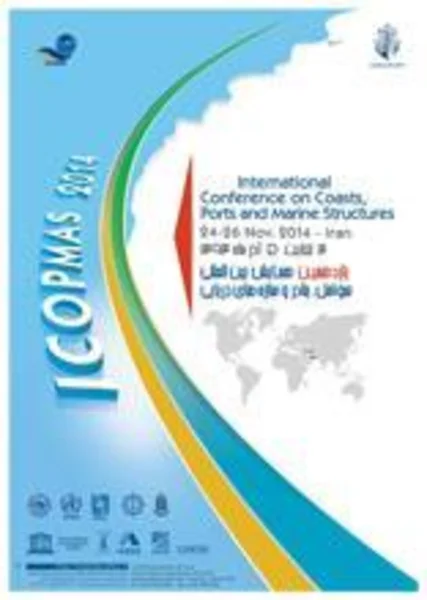-
simulation of sedimentation in trenches using a two-dimensional vertical (2dv) numerical model
جزئیات بیشتر مقاله- تاریخ ارائه: 1387/01/01
- تاریخ انتشار در تی پی بین: 1387/01/01
- تعداد بازدید: 662
- تعداد پرسش و پاسخ ها: 0
- شماره تماس دبیرخانه رویداد: -
accurate estimation of sedimentation rate in harbors' entrance channels, which affects the costs of dredging operations, is a challenging task for coastal engineers. moreover, assessment of backfilling rates in trenches dredged for pipelines or cables is an interesting problem for marine environment engineers. accurate prediction of this phenomenon will provide the possibility of better design and maintenance of these channels. numerical simulation is a common and efficient technique for prediction of sedimentation and erosion in trenches. over last decades, lots of numerical models have been developed to study the sediment transport process in trenches and channels. nevertheless, a few of these models have addressed sedimentation and morphological changes. van rijn (1987) modeled trench migration using sutrench numerical model, which consists of velocity and sediment mixing coefficient profiles calibrated by experimental data and results of k − ε model. solving 2-d navier-stokes equations, jensen and fredsøe (2001) simulated backfilling of trenches in oscillatory flow. in a similar study, liang et al. (2005) simulated backfill of pipeline trenches in both steady and oscillatory flows. in the present study, a numerical model is introduced for simulating sedimentation in trenches under 2-d vertical flow conditions, and the results are compared with experimental data. numerical modeling of sedimentation in trenches requires flow, sediment transport and morphologic submodels. the flow model recently developed by ahmadi et al. (2007) has been used as one of submodels. it is an implicit non-hydrostatic model which simulates free-surface flows by solving navier-stokes equations and models the turbulence using k − ε model. sediment transport computations have been accomplished based on the concentration model already developed and explained by ebrahimi and badiei (2007). this model simulates concentration field in a boundaryfitted curvilinear grid by solving advection-diffusion equation of sediment concentration. in the present study the focus is mainly on morphological sub-model. this model employs a staggered grid system along with a variable adaptive time step based on the acceleration of morphological changes. the computational results of bed-level changes exhibit a reasonable agreement in comparison with experimental measurements.
حوزه های تحت پوشش رویداد
مقالات جدیدترین رویدادها
-
استفاده از تحلیل اهمیت-عملکرد در ارائه الگوی مدیریت خلاقیت سازمانی و ارائه راهکار جهت بهبود
-
بررسی تاثیر ارزش وجوه نقد مازاد بر ساختار سرمایه شرکت های پذیرفته شده در بورس اوراق بهادار تهران
-
بررسی تأثیر سطح افشای ریسک بر قرارداد بدهی شرکت های پذیرفته شده در بورس اوراق بهادار تهران
-
بررسی تأثیر رتبه بندی اعتباری مبتنی بر مدل امتیاز بازار نوظهور بر نقد شوندگی سهام با تأکید بر خصوصی سازی شرکت ها
-
تأثیر آمیخته بازاریابی پوشاک ایرانی بر تصویر ذهنی مشتری پوشاک ایرانی (هاکوپیان)
-
تاثیر اجازه در نکاح فضولی از منظر فقه و حقوق
-
معماری یخچال، شاهکاری در دل کویر
-
500-fps face tracking system
-
experimental study of an al2o3/wc–co nanocomposite based on a failure analysis of hammer bit
-
catalytic hydrogenation of xylose to xylitol using ruthenium catalyst on nio modified tio2 support
مقالات جدیدترین ژورنال ها
-
مدیریت و بررسی افسردگی دانش آموزان دختر مقطع متوسطه دوم در دروان کرونا در شهرستان دزفول
-
مدیریت و بررسی خرد سیاسی در اندیشه ی فردوسی در ادب ایران
-
واکاوی و مدیریت توصیفی قلمدان(جاکلیدی)ضریح در موزه آستان قدس رضوی
-
بررسی تاثیر خلاقیت، دانش و انگیزه کارکنان بر پیشنهادات نوآورانه کارکنان ( مورد مطالعه: هتل های 3 و 4 ستاره استان کرمان)
-
بررسی تاثیر کیفیت سیستم های اطلاعاتی بر تصمیم گیری موفق در شرکتهای تولیدی استان اصفهان (مورد مطالعه: مدیران شرکتهای تولیدی استان اصفهان)
-
رابطه بین سکوت سازمانی با عملکرد شغلی دبیران مقطع متوسطه شهرستان گچساران
-
تحلیل شیوه های جذب محبت الهی در آموزه های قرآن و حدیث
-
heavy metal contamination of zinc and lead in region 1 and 2 of the main city of ardabil
-
theoretical study of effect ligands on molecular & orbital properties of cu complexes of industrial dyes formazan
-
the role of good governance mediation in the relationship of management efficiency and accountability




سوال خود را در مورد این مقاله مطرح نمایید :